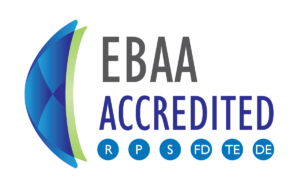

Frequently Asked Questions
What is the cornea?
The cornea is the clear convex tissue at the front of your eye. Its clarity is essential to good vision. The cornea has 5 layers: an outer cellular layer (epithelium) and its basement membrane (Bowman’s membrane), a layer of structural collagen matrix (stroma), and an inner cellular layer (endothelium) and its basement membrane (Descemet’s membrane).
Diseases, injuries, and infections affecting the cornea are collectively the 4th largest cause of vision loss worldwide. Many of these conditions can be treated successively by surgically replacing the affected cornea with a donor cornea. Corneas have been transplanted safely for over 60 years, with over 1 million patients having had sight restored through this procedure in the U.S. alone.
What is an allograft?
GlycerolPlus Cornea is a tissue allograft obtained from a deceased human donor who had generously made the decision to donate. Cornea is one of the safest, strongest allograft options available.
What is GlycerolPlus Cornea?
GlycerolPlus Cornea is a process by which human donor cornea is preserved for long-term storage and for use in surgeries not requiring living cells.
Glycerol is a colorless, odorless, and viscous liquid (also called glycerin) that is widely used in pharmaceutical formulations and cosmetics. It has anti-bactericidal and anti-virucidal properties that have been validated in the peer-review scientific literature.
The process typically used to preserve corneas short-term before transplant is designed to maintain the viability of corneal cell layers. In contrast, glycerol preserves the integrity of collagen (a structural protein), but not the cells. GlycerolPlus Cornea provides a scaffold for in-growth of the patient’s own ocular cells.
How long have surgeons used GlycerolPlus Cornea?
Surgeons began using corneas preserved in glycerol over 50 years ago. Corneas preserved in glycerol have been used for glaucoma surgery since approximately 2004. GlycerolPlus Cornea has been available through Global Sight Network since fall, 2008.
Why is a cornea used for glaucoma surgery?
Glaucoma is a family of disorders characterized by injury to nerve fibers from the eye to the brain. Elevated pressure inside the eye (intraocular pressure) remains the major modifiable risk factor. Treatments for glaucoma focus on regulating this pressure through drugs or surgery to promote improved drainage of aqueous fluid from the eye. The tube of a drainage device (shunt) is covered with a material like cornea to protect it, maintain its position, and allow smooth gliding of the eyelid over it.
What measures are employed to ensure patient safety?
We focus on offering the safest, and most effective tissue possible, through a multi-step process that is regulated by the U.S. Food and Drug Administration and the Eye Bank Association of America (EBAA). Eye banks contributing tissues to Global Sight Network are all EBAA members and adhere to the same rigorous standards for tissue quality.
These steps include stringent screening of potential donors (i.e. people who donate their organs and tissue after passing away) for history of disease and behavioral indicators of risk for disease, such as drug abuse. Donor screening includes a full-body physical examination. Blood samples are tested for extensive list of communicable diseases. Donated tissues are inspected for quality and suitability for different surgical procedures. After each donation, medical records are reviewed independently to verify that no detail has been overlooked. These steps are carried out in consultation with physicians who are expert in eye donation science. Personnel involved in each step of this process are specifically trained for these tasks and participate in continuing education on an ongoing basis in order to maintain accreditation.
By mandate of the EBAA, we ensure complete tissue traceability. Records are kept of the tissue source and specifics related to the donor’s medical history. This information is assigned a code, which is placed on all tissue packaging to ensure the traceability of each GlycerolPlus Cornea back to the donor’s medical record.
What happens to the tissue after passing the donor screening process?
Following successful screening, each tissue is sent to Global Sight Network’s headquarters. After close inspection of tissue quality and packaging integrity, corneas are transferred to glycerol. As a dehydrating agent, glycerol effectively removes cells that cause rejection, allergic reactions or inflammation from the donor cornea. The strength or integrity of the tissue is not compromised by this process.
How do you control the quality of the allografts?
Quality of GlycerolPlus Cornea is carefully controlled. The process is performed entirely by specially trained personnel. Each step of the process receives repeat inspections for consistency throughout initial processing to final packaging.
What happens to GlycerolPlus Cornea after it is transplanted?
In the body, GlycerolPlus Cornea acts as a support or bridge for the in-growth of new cells that normally live on the surface of the eye. Over time, your own living cells will begin to re-populate the scaffolding afforded by the donor tissue. As your body undergoes its natural healing process, GlycerolPlus Cornea gradually becomes part of your healthy body.
Ask your doctor for more information
Your questions and concerns about your surgery can be best answered by your surgeon. You can help ensure the best outcome for your procedure by carefully following your surgeon’s instructions.


